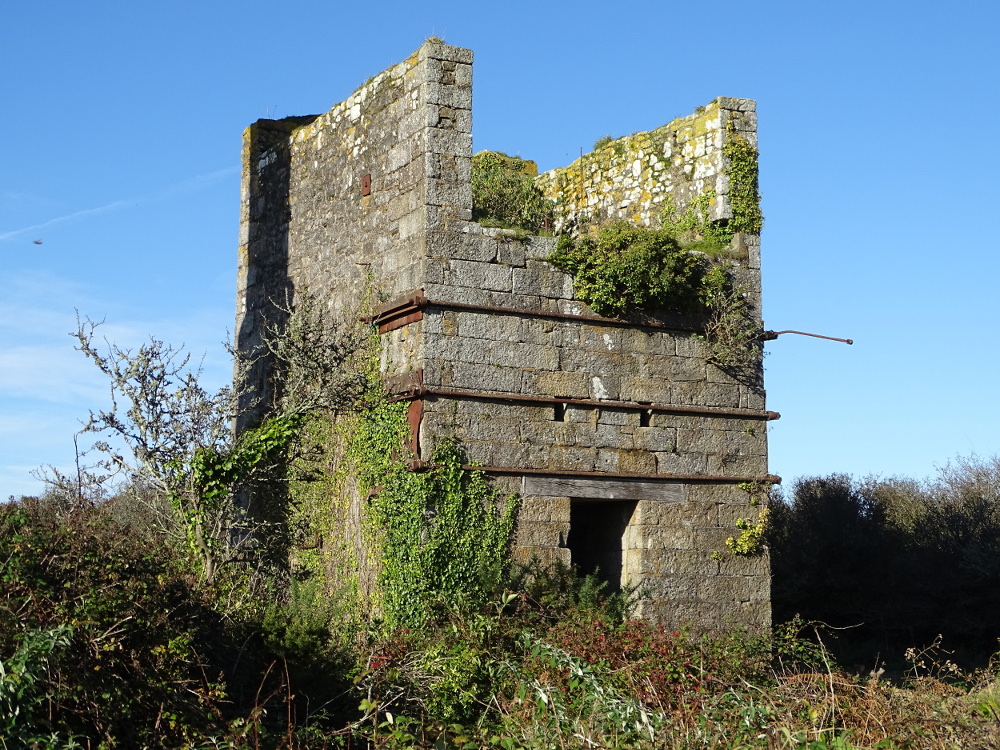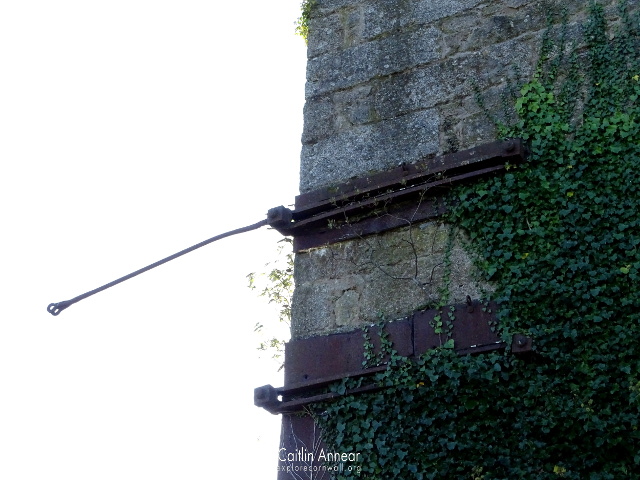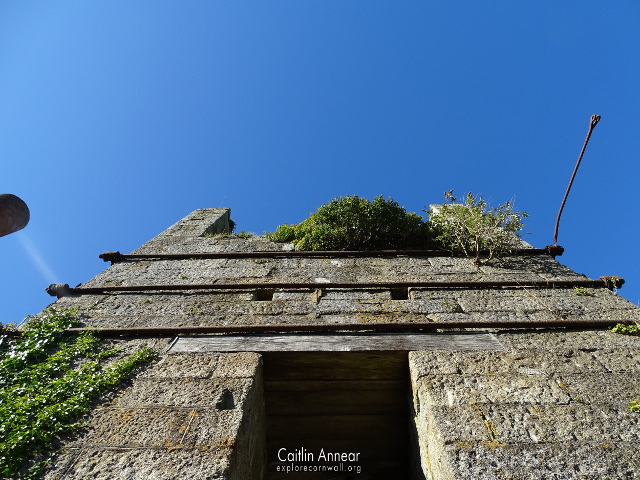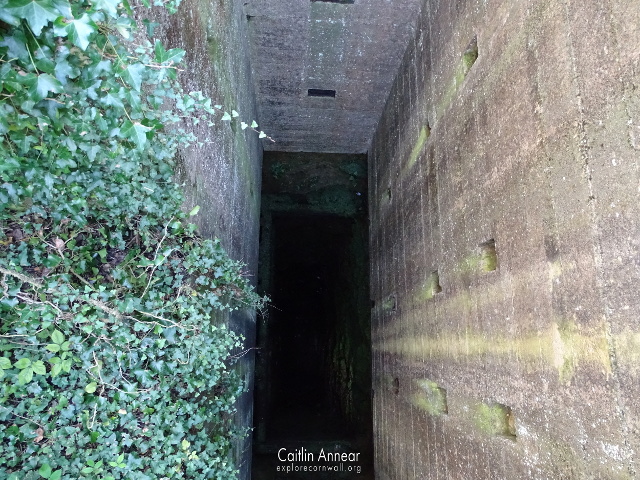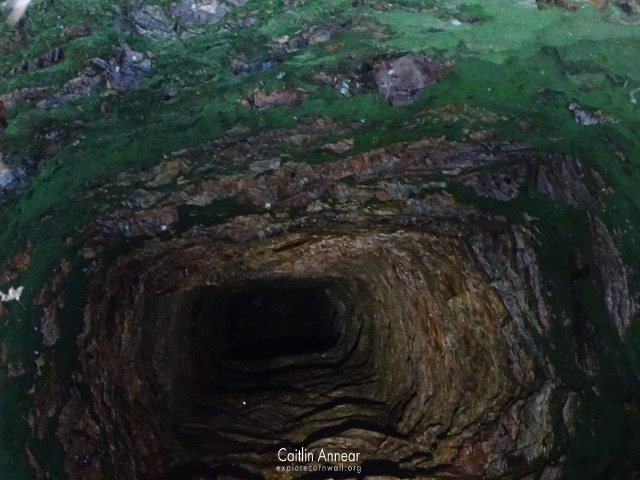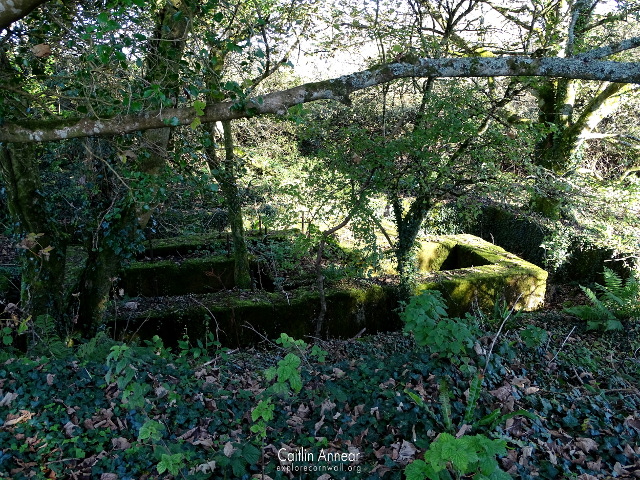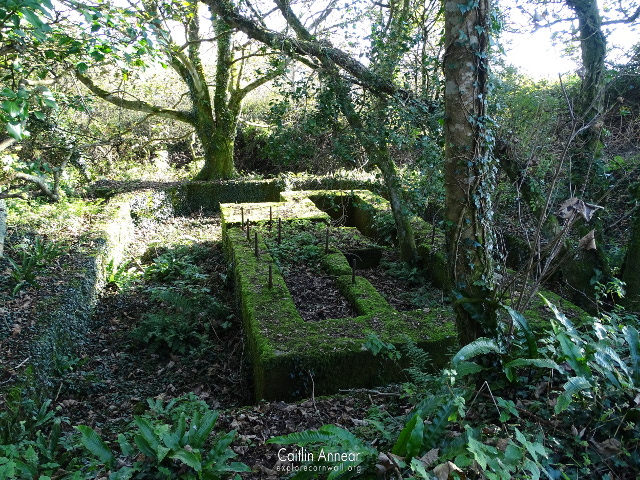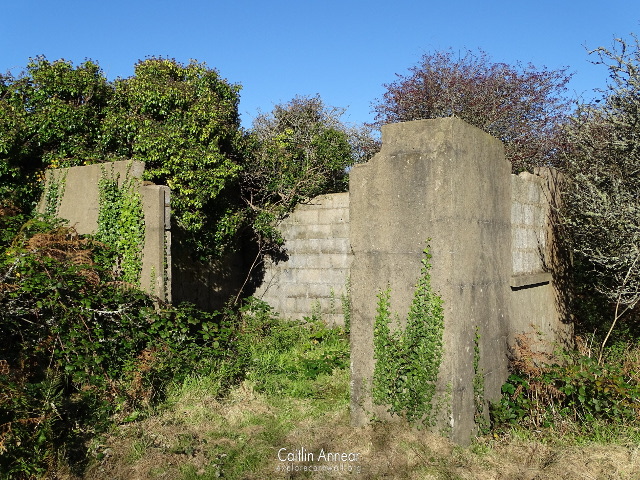Perched at the southern base of Godolpin Hill is the the remains of Great Work Mine, with its beautiful 60″ engine house and its unique telescope stack.
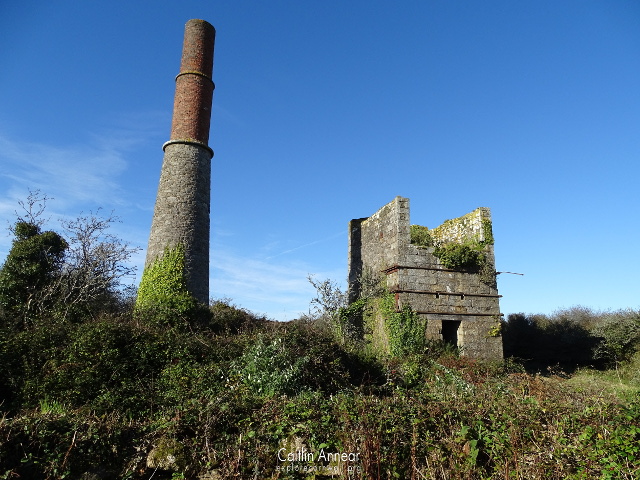
An old mine, Great Work was probably already underway in the 16th century. In 1643 a mine in the area was producing copper under the name Godolphin Bal, although this may have been its northern neighbour.
It was at this mine that Thomas Epsley first introduced blasting into Cornwall in 1689, hailing the beginning of a new method of mining. However, despite this improvement the price of tin dropped, making the mine too expensive to run. It soldiered on, closing in 1793 before being revived in 1810 as a major copper producer. This reworking saw over 400 people being employed for most of the century, although underground work did grind to a halt in 1873.
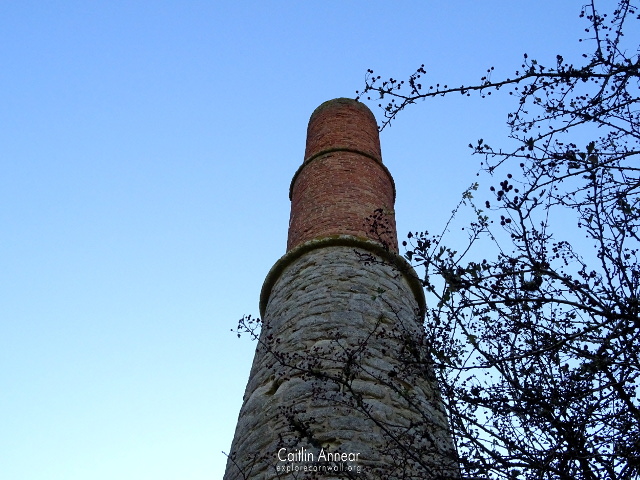
The mines wonderful telescope stack.
Between 1890 and 1902 it was briefly worked as Old Great Works and again as South West Cornwall Mines from 1907 to 1912.
In 1927 the mine was attempted again with neighbour Wheal Reeth, but this only lasted ten years.
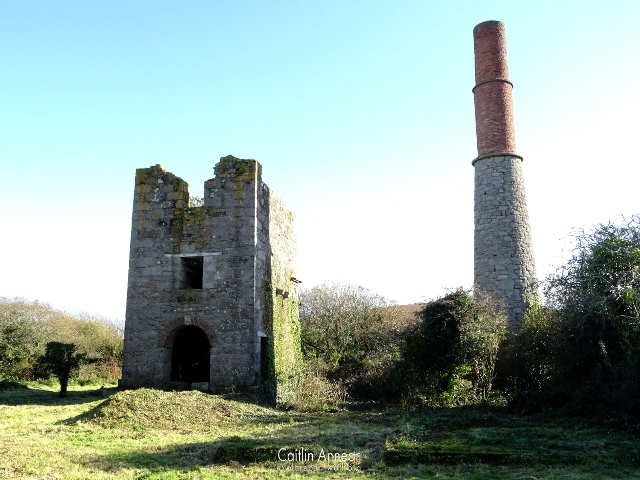
Yet another team had a look in 1935 as Great Work Tin Mines Ltd; they began to unwater the Deepark shaft section, but quickly turned their attention to their attention to higher levels and allowed the bottom to flood again. Work stopped for a final time in 1938.
Leed’s (160 fathoms/293 m), India (73 fathoms/134 m), Cooper’s (49 fathoms/90 m), Pay-my-debt (66 fathoms/121 m), Trehayle (99 fathoms/181 m), Payhouse (83 fathoms/152 m), Mollard’s (83 fathoms/152 m), Dudda’s (83 fathoms/152 m), Blow (100 fathoms/183 m), Crane (170 fathoms/311 m), Pensandane (50 fathoms/91 m), Goodfortune (170 fathoms/311 m), Deerpark (180 fathoms/329 m), Blue Dipper (74 fathoms/135 m), Pool’s, New Barker’s, Planner’s, Bank, Chain, Wheal Breage, Wheal Kine, Barker’s, Richard’s, Highburrow, Pennack’s, Fire Engine (50 fathoms/91 m) and Burnt Whim.
Main, Wheal Reeth, Middle, Wheal Breage and South Wheal Breage.
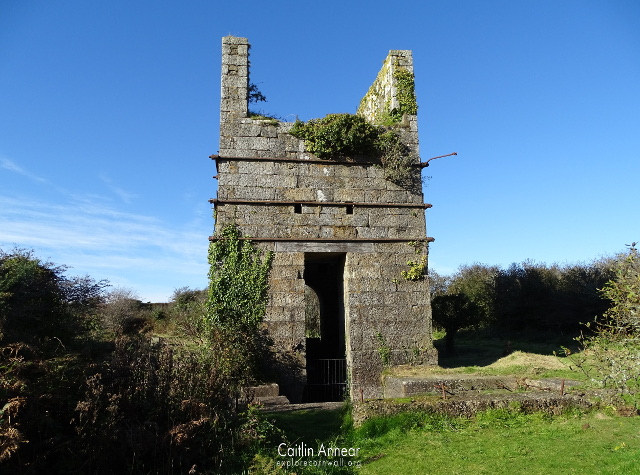
The remaining engine house on the mine belonged to the 60″ pumping engine on Leed’s shaft, built in 1835 by Harvey’s and Co of Hayle. In 1857 it was rebuilt, again by Harvey’s. It’s first engine house was another pumping engine of unknown size which came from Ludgvan-Lees Mine in 1754. There was also a pumping engine on Fire Engine shaft by 1768 and two sets of stamps at work during the same period.
Output for the mine between 1832-40 and 1848-1902 is 6,256 tons (6,356,389 kg) of black tin, 1,020 tons (1,036,368 kg) of 7.5% copper and 2 tons (2,032 kg) of arsenic.

Access to the engine house and other remains around Leed’s shaft is free to access.
There is a small free carpark just next to the engine house.
Dines, H. G. (1956) The metalliferous mining regions of south-west England. British Geological Survey.
Hamilton-Jenkin, A. K. (1965) Mines and Miners of Cornwall: XI Marazion, St Hilary & Breage. Truro: Truro Bookshop.
Nance, D. and Brown, K. (2014) A complete guide to the engine houses of West Cornwall. Gloucestershire: Lightmoor Press.
Reynolds, A. (2000) Godolphin and Great Work. Available at: http://map.cornwall.gov.uk/reports_event_record/2000/2000R039.pdf (Accessed: 30 June 2020).
